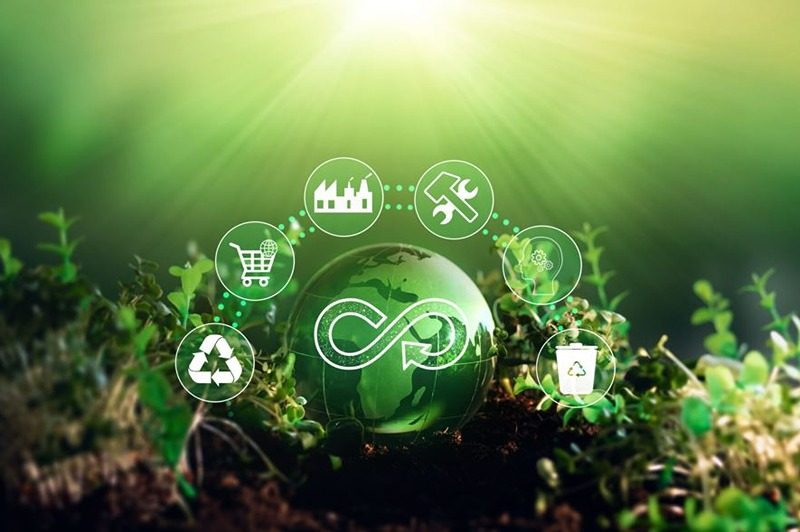It may seem strange to say that clothing can present a danger to human health and the environment. However, it is now a reality that can no longer be ignored. Take a look in your dressing room, and more specifically at the labels on your clothes. All you'll find is the fabric composition. But is a garment really free of other substances? On closer inspection, you'll be amazed at the number of chemicals used in its design. What are they? What are their effects on the skin and the ecosystem? What are the our commitments at Subli Sport ? We'll spill the beans.
Dangerous components for our health
The use of chemical substances in the textile industry has been common practice for many years. These products are used to treat clothing to give it certain characteristics, such as flexibility, coloured dyeing, crease-resistance, anti-perspirant properties, etc. But what about their toxicity?
Like food and hygiene products, clothing can contain components that are hazardous to health. Fabrics in prolonged contact with the skin can cause irritation and skin problems, and can even lead to cancer or infertility. In fact, every year in Europe there are between 50,000 and 200,000 cases of skin allergies, which is why the French Safety Agency has decreed a limit on the use, or even a ban on the use, of certain products deemed toxic.
It's a fact that the majority of textile articles are manufactured in Asian countries, where regulations on harmful products are laxer and controls non-existent.
The effects on our skin
Clothes are far from harmless. While the fabric itself poses no danger to the skin, the same cannot be said of the dyes and other additives used in the final design of the garment. In fact, certain substances considered toxic can cause more or less serious damage. They can trigger minor allergic reactions, just as they can lead to serious skin diseases. Similarly, some are likely to have carcinogenic effects and cause endocrine disruption.
What toxic substances are present in our clothes?
Studies carried out by Greenpeace have revealed what goes on behind the scenes in the textile industry. According to the NGO, two-thirds of the clothes we wear every day contain chemical substances that are hazardous to our health and the environment.
Among the most toxic are :
-
Nonylphenols
Like phthalates, nonylphenols are known to be endocrine disruptors. They have a harmful effect on reproduction, fertility and growth, affect the nervous system and can cause eye, respiratory and skin irritation.
These substances are used in the textile industry as detergents, wetting agents, dispersants, emulsifiers, etc.
-
Formaldehyde
The harmful effects of this substance, designed to give a crease-resistant effect to technical fabrics, are far from negligible. It can cause eye irritation, respiratory problems and, in the worst cases, lead to the development of cancer.
-
Perfluorinated compounds
Used to make clothing more waterproof, perfluorinated compounds affect the proper functioning of the thyroid gland. Worse still, if a pregnant woman is exposed to these substances, the newborn can suffer from stunted growth and behavioural problems.
-
Flame retardants
Considered to be endocrine disruptors, these flame-retardant chemicals also have undesirable effects on the nervous system. They can cause attention deficit disorder, behavioural problems, hyperactivity, and so on.
-
Dyes
As well as releasing carcinogenic substances, dyes can cause serious skin reactions as well as liver and kidney damage. The most dangerous are azo dyes which, despite being banned in Europe, are still widely used because of their low cost.
Of course, these examples represent only a tiny part of the iceberg. And although the vast majority are banned by the European Union, this is not always the case in other parts of the world. Hence the importance of remaining vigilant.
Environmental effects
In addition to the harmful effects on our health, we cannot overlook the disastrous consequences of these chemical substances on our environment. Let's not forget that every time we wash our clothes, and even during the production process, a significant proportion of these compounds are released into the environment via waste water. Since they are rarely eliminated by wastewater treatment plants, they end up in nature, and more specifically in the aquatic environment.
The SubliSport Vision: Priority to Health and Ecology
At SubliSport, the health of our customers and respect for the environment are at the heart of our concerns. Here's how we guarantee the safety and durability of our products:
- Oeko-Tex® certification: Our fabrics are Oeko-Tex® certified, a global trustmark since 1992, ensuring that our sportswear is free from harmful chemicals.
- Rigorous controls : Every stage in the processing of our fabrics is meticulously controlled according to international standards, guaranteeing the safety of our personalised sportswear for your skin and for the planet.
- PFC-free commitment : We ensure that all our technical products, particularly those with water-repellent treatments, are PFC-free, contributing to more environmentally-friendly production.
SubliSport is committed to offering sports equipment that combines performance, comfort and ecological responsibility, so that you can practice your sport safely and with respect for the environment. Discover our eco-responsible range and join us in our commitment to a healthier, greener future.

